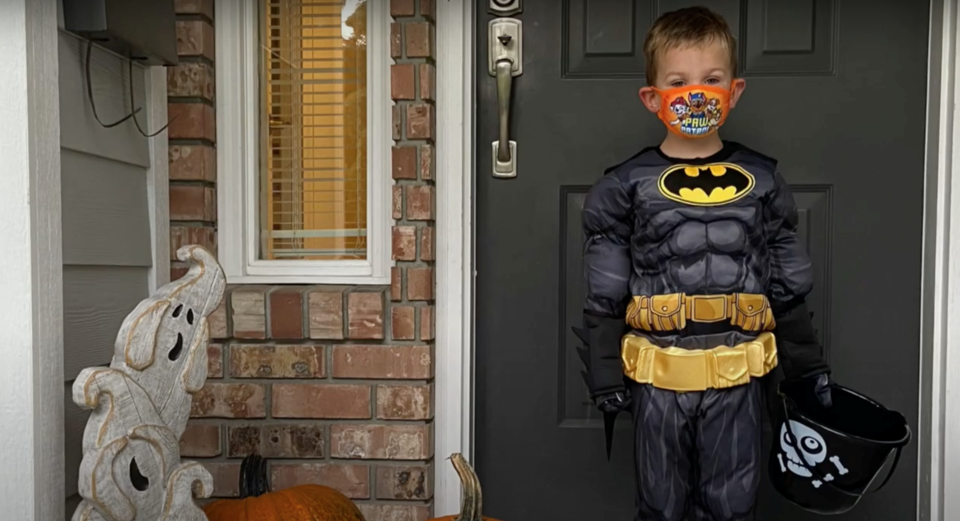It's been said before and it will likely be repeated over and over again as Oct. 31 approaches: Halloween will look a lot different this year.
But just because the holiday will be different doesn't mean celebrations are cancelled. With COVID-19 cases on the rise in B.C., any revellers will need to plan out their safety precautions before the big night, whether their plans are set to include handing out candy, gathering with a small group of friends, or trick-or-treating. Ahead of Halloween, B.C. paramedics are offering up a few tips to help ensure everyone’s celebrations stay on the safe side.
“Every year there are important precautions that parents, trick-or-treaters, and homeowners should take to make Halloween a fun and safe event for everyone. This year is different, and so, Ambulance Paramedics of BC is asking the public to take some extra precautions to ensure we minimize risks of transferring COVID19,” said Megan Lawrence, provincial education director and primary care paramedic with the Ambulance Paramedics of BC.
Here are a few important safety reminders from the Ambulance Paramedics of BC.
To prevent the transmission of COVID-19:
· Trick-or-treat in small groups, and make sure to keep an appropriate distance between your group and others
· Get creative to make as much space as possible when handing out treats
· If you are planning to hand out candy, hand out individual treats using tongs rather than having children grab candy from a communal bowl
· Skip the Halloween costume mask this year, and opt for a personal protective mask instead. Do not wear both because it will be difficult to breathe.
For trick-or-treaters:
· Make sure to remain visible at night. Opt for light-coloured costumes if possible, or add reflective material or glow sticks to costumes. Always bring a flashlight (or a smartphone equipped with a flashlight function) trick or treating.
· Ensure costumes fit properly. Avoid oversized shoes, capes that are too long, or bulky additions to costumes.
· Consider putting each child’s name and a contact phone number somewhere on their costume, in case kids get separated from their guardians.
· When planning your trick-or-treat route stick to areas you are familiar with. Ensure your route is well lit and preferably has sidewalks and crosswalks.
· When out trick-or-treating, stick to one side of the street, and cross once at a crosswalk if possible.
· Keep in mind that some candy presents a choking hazard for small children.
· Do not eat any treats until the candy is inspected by an adult.
For homeowners:
· Make sure your home is well lit and clear of debris—such as fall hazards like wet leaves—including driveways, pathways and porches.
· If handing out candy is not in your Halloween plans, turn off your porch light so children don’t approach.
For drivers:
· Drive slowly and be extra vigilant. Remember that trick-or-treaters may be too excited to obey the rules of the road, so be prepared for unpredictable behaviour.
For Halloween partiers:
· Limit social gatherings in size and keep guests to those within your bubble to prevent the transmission of COVID-19. Remember, B.C.'s newest restrictions limit indoor gatherings to those who live at the household and a maximum of six guests.
· Ensure you have a safe ride home with a sober driver.
· If you choose to use recreational or illicit drugs, never use alone – have a sober friend with you who can call 911 in case of emergency.
For fireworks enthusiasts:
- While consumer fireworks are banned in many B.C. municipalities, they are still allowed within Whistler's boundaries on Halloween
· Always read the instructions first.
· Only sober adults aged 18 years or older should handle fireworks.
· Only light one firework at a time and never handle fireworks that have been lit.
· Wear protective glasses and gloves, and keep baggy clothes and hair away from any fire sources. Ensure you are not wearing any flammable material, including your Halloween costume.
For more safety information, visit the BC Centre for Disease Control website. The most recent COVID-19-related orders can be found on the the BC Provincial Health Office website.



